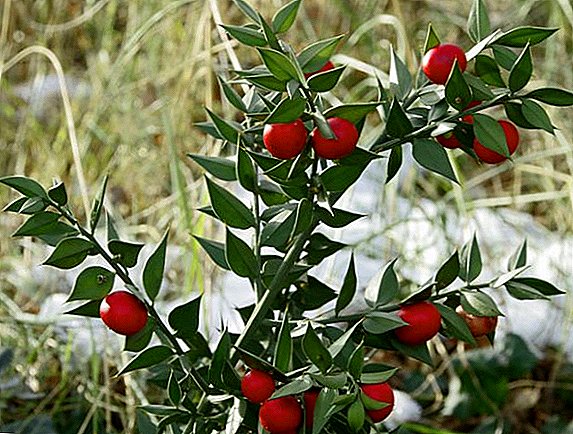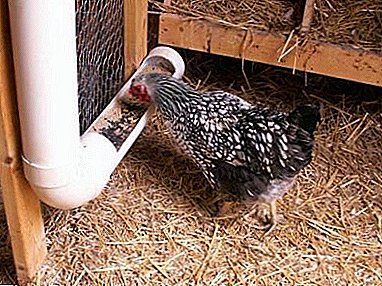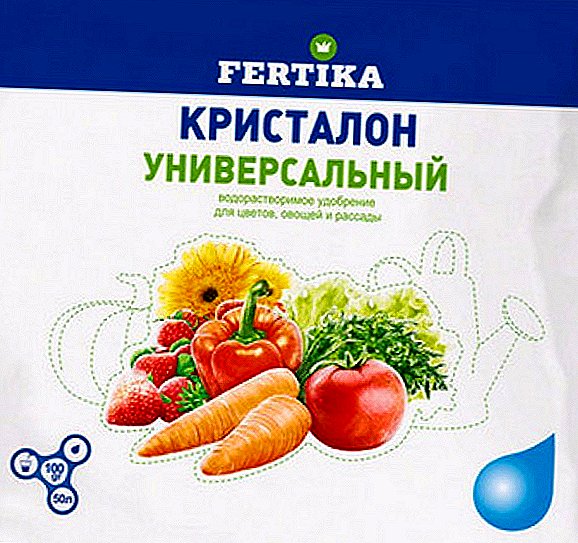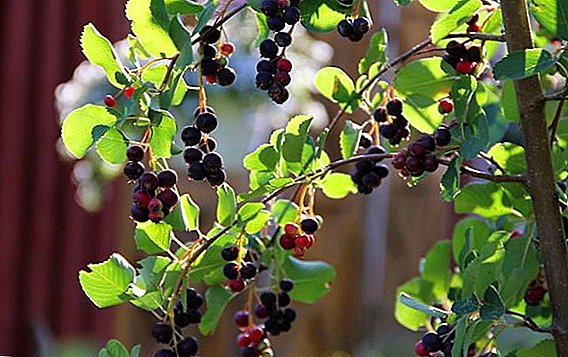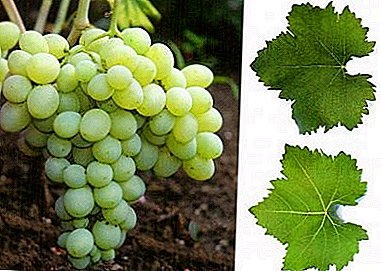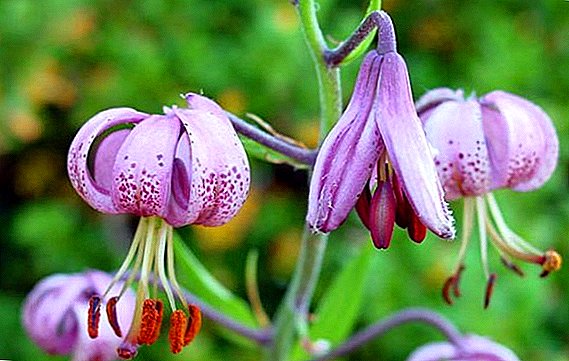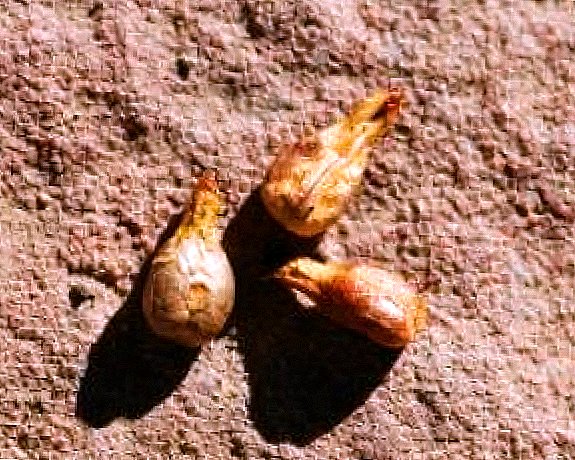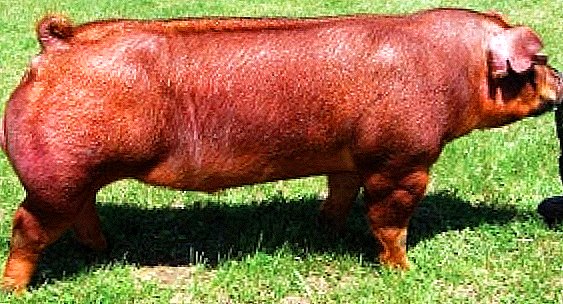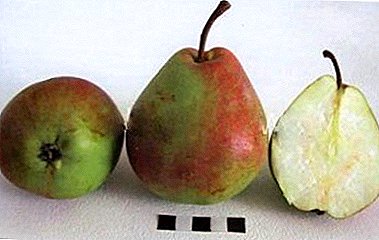
A pear is a garden decoration, a wonderful plant with amazing beauty of flowering and a rich harvest of very tasty fruits, but many gardeners do not hasten to plant a pear in their garden, considering it too capricious in growing, but often the fact is that by planting a plant on your plot, gardener does not take into account the preferences of the species and features of the variety
Science does not stand still, and breeding stations, actively working in all regions of our country, are developing new regionalized varieties that satisfy a variety of needs.
Among them is Tatiana pear, description, characteristics, photos of fruits and reviews of gardeners for this variety - further in the article.
What kind of pears refers?
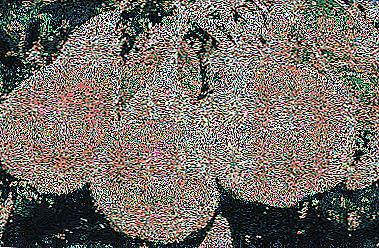 Pears varieties Tatyana ripen early autumnsomewhere by mid-September.
Pears varieties Tatyana ripen early autumnsomewhere by mid-September.
Included to the State Register for the North Caucasus region. A fast-growing tree with a rounded crown.
Fruiting is regular, resistance to diseases is high. The grade belongs to high-yielding.
Excellent yields are also demonstrated by the varieties: Hera, Lada, Children's, Decakrinka and Vernaya.
Pear Tatiana is currently popular in the south of the Voronezh and north of the Rostov regionbut thanks to the wonderful dessert taste, high, stable yields, and, very importantly, excellent frost tolerance up to 32 degrees, scab resistance.
Tatiana pear variety will be widely known and will find its admirers among gardeners, significantly expanding the range of its growth.
Breeding history and breeding region
Pear Tatiana is a hybrid varieties Favorite Clapp and Bere Winter Michurinand it is received on Rossoshansky zonal experimental stationwhich is well known for its popular gardening designs.
Among the "Rossoshanskih" varieties of fame are: Rossoshanskaya Dessert, Rossoshanskaya Beautiful, Rossoshanskaya.
Description varieties Tatiana
Fruits are large, up to 250 grams, pear-shaped, yellow with a purple blurred blush. The taste is amazing. tender, creamy flesh juicy and sweet. Tasting score of 4.5 points.
Plant has great growth power is a slender pyramidal treeacquiring with age large rounded shape. The Tatyana pear variety blooms a little later than most other varieties, the inflorescences are large, pinkish, and the flowers themselves are white, gathered in clusters of 9 flowers each. The leaf is large, glossy.
As mentioned above, Tatiana is an autumn variety. They also belong to Perun, Larinsky, Tikhiy Don, Uralochka and Bere Bosk.
A photo
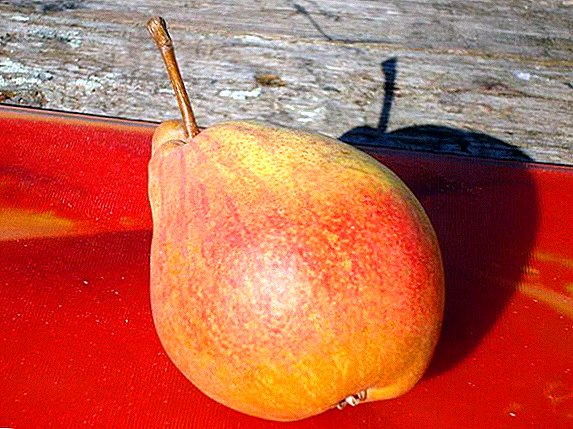
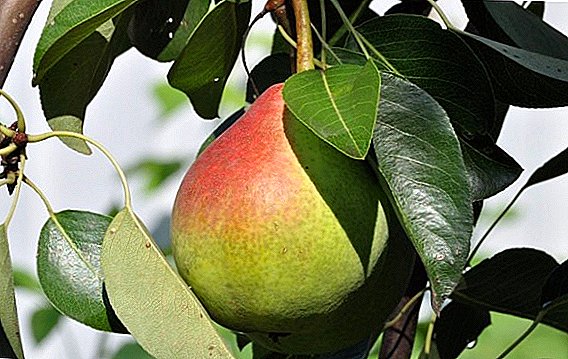
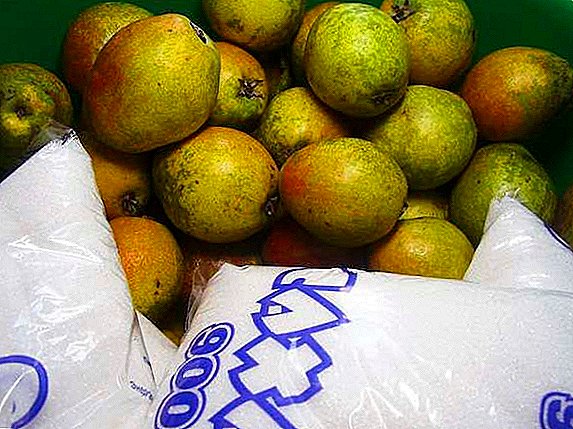
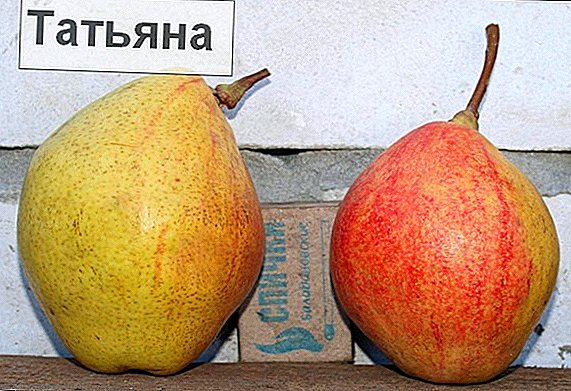

Specifications
Fruit variety, with stable fruiting, the first fruits gives at 6 or 7 year after landing. At grade there is no premature shedding of fruitswhat is a huge variety dignity plant tolerates winter low temperatures, resistant to //selo.guru/ptitsa/bolezni-p/gribkovye/parsha.html and powdery mildew.
Winter hardiness is also distinguished by Hera, Red-sided, Faithful, Forest Beauty.
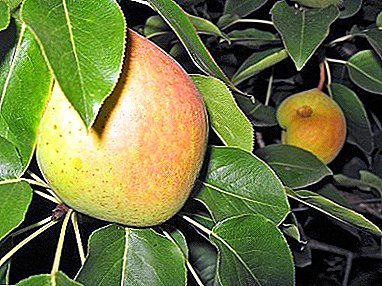 Variety pears Tatiana blooms a little later than other varieties, but it does not matter, pear plant self-fertile and well fruited with a single planting.
Variety pears Tatiana blooms a little later than other varieties, but it does not matter, pear plant self-fertile and well fruited with a single planting.
But in the event that pears grow nearby with the same flowering period and cross-pollination occurs, the harvest increases significantly.
But with Tatiana together you can plant one or two more plants of the same variety, yield will increase - when perefylleniya it does not matter the variety, it is important that the pollen from another pear tree.
Planting and care
You can plant a pear spring and autumn, but most gardeners give away spring preference, since during the vegetative period the seedling manages to settle down, prepare for the upcoming winter.
In order for our variety to show all its capabilities to the full, very It is important to choose the most suitable place for its landing.
Tatiana is a strong-growing tree and for its full development it is necessary well lit, free space without close neighborhood with other plants and buildings. Believe me, a pear is worthy of a royal position in your garden.
Petite Yakovleva, Noyabrskaya, Oryol beauty also possess a strong body nourishment.
In the event that you decide to plant several pear trees, you can arrange them in a row at intervals of 3-4 meters.
The pear does not tolerate flooding, and if they are able to plant the plants, they must be placed on artificial ridges or hills, and drainage grooves are necessary to drain off excess water.
Pear pits should be no smaller than 1 meter, and in diameter - 80 to 80 centimeters. The upper fertile layer is deposited separately from the less fertile; when digging out the planting pit, a roller should be made from the less fertile soil along the edge of the tree circle so that water does not spread during irrigation.
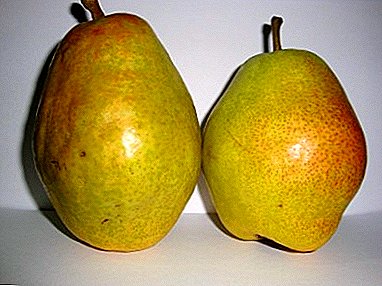 Soil should to enrich with a large bucket of humus, two handfuls of superphosphate, a handful of potassium salts and a shovel of wood ash per one seedling.
Soil should to enrich with a large bucket of humus, two handfuls of superphosphate, a handful of potassium salts and a shovel of wood ash per one seedling.
Pear grows well on slightly acid soils and does not need soil liming. A mound is built in the middle of the landing pit, and the roots are evenly spaced along its escapes.
The mound must be well compacted, and when the roots fall asleep by the soil it produces constant compaction to avoid voids, because of which roots decay and the plant may die.
Next to the seedling a peg is driven in, our plant is tied up loosely to it. The seedling is abundantly watered, and the soil is mulched.
It should be noted that the younger the sapling, the faster and painless rooting occurs, the best planting material - one-and-two-year-old seedlings.
When planting annual plants tops should shorten to a meter, and the kidneys located below 50 centimeters - remove, the biennial seedlings have sufficiently developed shoots, and the pear is prone to crown self-formation, pruning is done only for sanitary purposes.
In the event that freezing happens and the pear has increased the tops, some of them are left to replace the affected shoots, but they will bear fruit only if they are placed horizontally, tied to the pegs.
Watering and weeding in the first year of life are held regularly as needed, dressing is not needed - organic matter is applied once every three years; minerals are sufficiently planted for planting for several years.
Lack of nutrients is easily determined by slowing the growth of young shoots, if their growth is normal - no feeding.
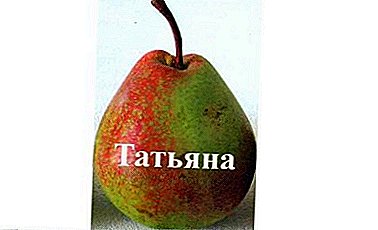 An excess of organic matter leads to an excessive build-up of shoots, which, as a rule, do not have time to mature for winter, and an excess of mineral fertilizers leads to poisoning of the plant's body.
An excess of organic matter leads to an excessive build-up of shoots, which, as a rule, do not have time to mature for winter, and an excess of mineral fertilizers leads to poisoning of the plant's body.
In all we need a measure, or rather, a scientifically based calculation.
Before the start of fruiting, the trunk circle needs to be dug up, then - to produce tinning and mow the grass regularly.
Diseases and pests
Variety of pears Tatyana is resistant to diseases and with proper care the plant with A good immune system is able to withstand most diseases.
But if the plant got sick, you found fruits affected by fruit rot or scab, bark damaged by a bacterial burn or rust by foliage, process the pear tree with special preparations of your choice. It may be Delan, Scor, Pennkoceb and similar means.
A good means of prevention is spraying the plant in the early spring or late autumn period with a 10% urea solution.
A pear tree lives for a long time and its trunk and large branches gradually acquire old, cracked bark, lichens, fungi, insects will settle on it, and that this does not happen, the old bark must be cleaned of the trunk and branches.
Where necessary, places of possible damage are treated with copper or iron sulphate, and then whipped with lime with the addition of clay, and mullein.
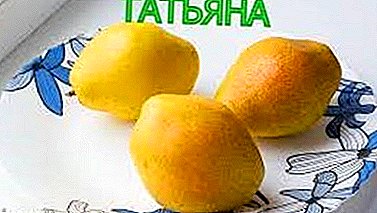 This exercise is a good prevention of disease and in the fight against pests effectively, bark - a good shelter for insect pests.
This exercise is a good prevention of disease and in the fight against pests effectively, bark - a good shelter for insect pests.
Resistance to different diseases have varieties: Larinskaya, Perun and Duchess.
In the event that you have discovered flowering beetles, gall mites or moths, treat the plant with any insecticide of your choice, strictly following the recommendations of the instructions.


